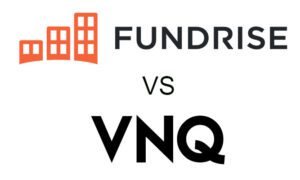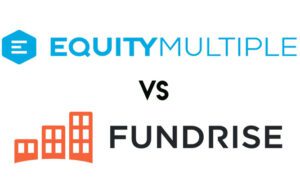Many people associate real estate with wealth.
But real estate hasn’t been available to the average person. It’s always been, “you have to have money to make money.”
Well, companies like Groundfloor and Fundrise have set out to change that.
Their mission is to bring real estate investing to anyone.
How does Crowdfunded real estate work?
Crowdfunded real estate is an innovative way to allow average investors to get in on the gains of real estate.
It works by pooling many people’s money together to fund real estate investments, thus allowing these investors to profit from the real estate, even with small investments.
Companies like Groundfloor and Fundrise work as a middleman between investors and investment. They use the money raised through crowdfunding to issue loans to real estate developers, or to invest in the properties directly.
Crowdfunded real estate is a win-win. Investors get easy access to real estate, and borrowers get access to cash.
How Does Groundfloor work?
Groundfloor issues real estate loans and allows you to invest in them.
You essentially become the bank in this scenario. You lend money to a borrower who must pay their loan back, plus interest. Groundfloor facilitates this process.
Most Groundfloor loans are short-term, and they invest in Residential homes, townhomes, and condos.
One of the cool features of Groundfloor is that it allows you to choose the projects you want to fund. You can scroll through the list of loans available, and select the ones that interest you based on rate and risk level.
Groundfloor has proprietary algorithms that rate the loans based on their risk level. The riskier the loan, the higher the interest rate they pay.
Groundfloor markets itself essentially as a high-yield savings account. You put your money in the account and earn the interest from the loans you select.
Groundfloor is great for adding real estate exposure, getting high-interest rates, and having control over the specific investments in your portfolio.
How Does Fundrise Work?
Fundrise purchases income-producing real estate and allow you to invest in them.
They group together these properties into pre-built portfolios. They have a core fund, a fixed-income fund, and a collection of eREITs. Each of these has different features, returns, and risk levels, and you can choose the one that suits your situation.
The investing process of Fundrise is similar to a REIT (Real Estate Investment Trust). Traditional REITs are sold by brokers and financial advisors, and they give investors the ability to invest in real estate without having to manage properties.
The eREITs of Fundrise are similar, but one of the advantages they offer is transparency. Traditional REITs can be loaded with hidden fees, and you often don’t know the exact properties you’re investing in.
Fundrise, however, clearly displays their fees, and they give detailed information about the properties they’re investing in. They also give regular updates about the properties, keeping you informed about your investments.
Fundrise is great for long-term, low-cost, real estate investing.
Groundfloor vs. Fundrise: What’s the difference?
The biggest difference between these two platforms is how their portfolios are constructed.
With Groundfloor, you’re investing exclusively in real estate debt. On the other hand, with Fundrise, you’re investing in actual real estate properties and the income they produce.
Groundfloor provides a steady stream of short-term investments. Fundrise portfolios are long-term investments.
Groundfloor allows you to choose the specific loans you’re investing in, while Fundrise chooses the real estate investments for you, based on your risk tolerance.
Fundrise charges 1% in fees, while Groundfloor charges no fees to the investor.
Groundfloor vs. Fundrise: Risks
Since Groundfloor and Fundrise differ in how they construct their portfolios, they also differ in their risk exposure.
First, any real estate investment is subject to the risks of the real estate market as a whole. Anyone who experienced 2008 knows this. Real estate prices can have major downturns.
With Groundfloor, the primary risk is that the borrowers can default on their debt.
An investor in Groundfloor is lending money to borrowers who must pay that loan back, and if something happens where they can’t pay it back, the investor gets no return. However, since the loan is backed by real property, in the case of default, Groundfloor can liquidate the property and repay the investors.
Fundrise doesn’t invest in debt the way that Groundfloor does, so the risk is different.
One risk with fundrise is that it can take time to get your money back. You must submit a liquidation request, and these are only processed quarterly.
Conclusion
Real estate can be a great way to diversify your portfolio, and these two innovative companies allow the average investor to do that.
Both programs use advanced technology, have low fees, and have a great track record of returns.
Check them out for yourself:



































